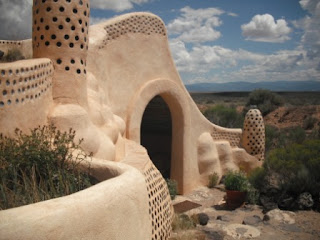
Beautiful isn't it? There is something about earthen architecture that I absolutely love. It's a renewable resource, inexpensive, durable, abundant, and just so natural. Not to mention it looks awesome. Besides all this, I have huge respect for Native culture- and so I found myself at Taos Pueblo.
This is one of those amazing places that I shake my head in disbelief while there, "How did I not know this place exists?" America is just outstanding. I question why I ever go travel abroad when there are endless treasures right here in the 50 states. Taos Pueblo is one of the oldest. It is considered to be the oldest continually inhabited communities in the U.S. As taken directly from the Pueblo's information guide, "The Native legends and detailed oral history trace our existence back to the beginning of evolution of man and all of creation. Our Native Language, Tiwa, is unwritten, unrecorded and will remain so. the details of our traditional values are guarded as sacred and are not divulged. Understand that the past oppressions upon our culture have required us to keep the details unspoken."
The small community maintains a traditional lifestyle free from electricity and running water- and will remain so. The homes are adobe- a mixture of earth, straw and clay. They must be re-plastered annually due to weathering of the adobe. (A far cry from our modern day vinyl siding trend huh?) I find these homes incredibly artistic- yet very simple and peaceful. I think I might do quite well living in such an environment. Of course, I am not native in ancestry, so the chances of that are slim to none. These buildings are very sacred to the Pueblo people, and Kivas outline the tourist area. They are off limits to outsiders of course. There is a Catholic Church in the community however. I am a little conflicted on it's existence here, but it's a lovely building none-the-less.


As you walk around the pueblo, you can't really go inside any of the buildings, I mean, these are peoples homes. You can however visit any of the many small dwellings that function as stores. Here's one way that the local people can boost they're economy a bit. Most of the stores sell fantastic locally made jewelry and crafts. They are master crafts people, truly beautiful art.

One thing that I found particularly interesting about their building designs have to do with the many ladders you see everywhere.

As taken again from the Pueblo literature, "The buildings are actually many individual homes built side by side and in layers with common walls and no connecting doorways. The Pueblo looks much like it did when the conquistadors first arrived. The exception is the introduction of doorways. At one time, the only entryway into the homes was by ladder through an opening in the rooftops. this served as a source of light then as it still does today. The roof top entrances also served as a safe guard against intruders of the Pueblo. If an enemy was approaching, the ladders were pulled from the ground levels to the rooftops." Amazing!
There is so much more to this UNESCO World Heritage Site than this blog can offer. It's really one of those places that you just have to experience, not just see in pictures and read about. For more in depth information go here: http://www.taospueblo.com/index.php
I am mostly impressed than even today- in the too busy and hectic 21st century, that the community chooses not to buy into the frantic outside lifestyle. I must say here that I felt a little odd about walking around the pueblo- a tourist among their homes taking pictures of their daily lives. How would you feel if a group of people started walking around your neighborhood snapping photos and pointed at your house, your roof, in awe of the way you live. It seemed a little intrusive and embarrassing. Yet, at the same time, I felt honored to be welcomed into this sacred community- I just wish more neighborhoods were like this. If only we Preservationists had the skills to work on that...







































